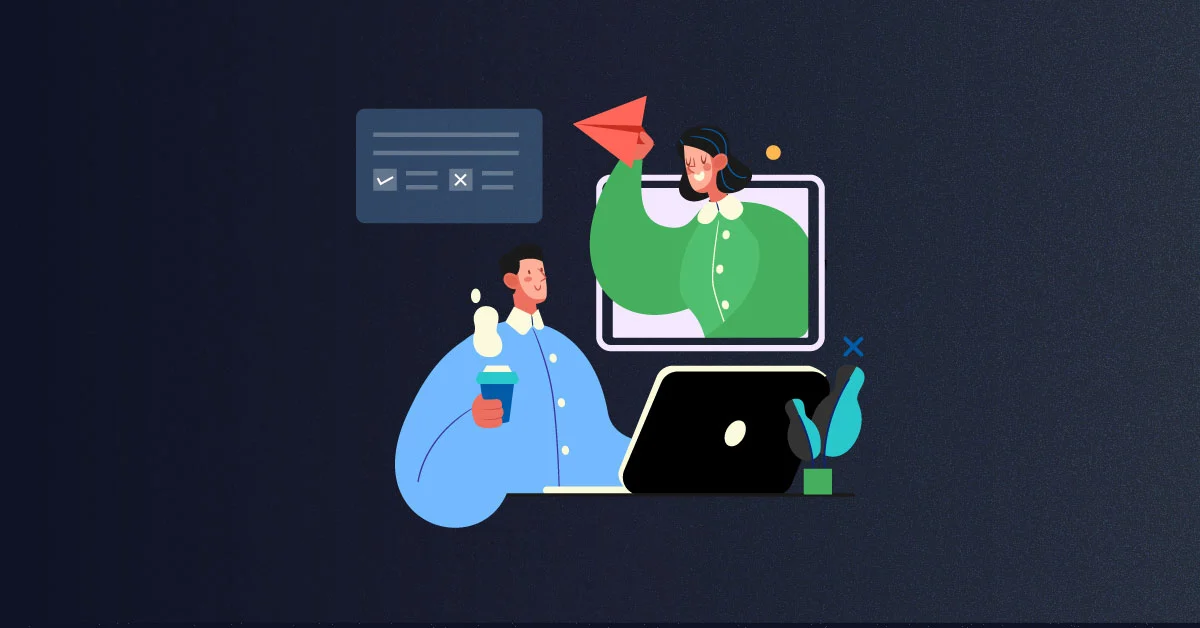The advent of a worldwide distributed workforce is more than just a trend in the rapidly changing environment of the modern workforce; it represents a fundamental change in how organizations function. As businesses increasingly extend their reach across borders, harnessing the potential of diverse talent pools, the need to scale L&D has never been more pressing.
According to the Deloitte 2023 Human Capital Trends survey, most corporate executives believe creating the ideal hybrid workplace model is critical to their company’s success. However, only 24% think their company is prepared to handle this need. In this era of ubiquitous connectivity and remote collaboration, how we approach Learning and Development (L&D) must evolve to meet the demands of a workforce scattered across geographical boundaries.
This blog delves into the intricate interplay between the rise of the globally distributed workforce and the pivotal role of scaling L&D strategies. Let’s explore the significance of adapting and innovating in employee development to foster growth and success in this new era of work.
I. Dynamics of a Distributed Workforce
A global shift towards distributed teams has become a defining feature in the ever-evolving landscape of the modern workforce. As organizations expand their reach across borders, the L&D landscape faces unique challenges in sustaining engagement.
Navigating through diverse time zones and cultural nuances, L&D professionals encounter intricate hurdles in ensuring that development remains a focal point for a globally scattered workforce. Insights into the performance outcomes of a distributed workforce shed light on the effectiveness of current L&D strategies. It’s not just about addressing challenges; it’s also about uncovering opportunities for growth and efficiency in this distributed paradigm.
II. The Imperative to Scale L&D Initiatives
Against a distributed workforce, the need to scale learning and development initiatives has never been more pronounced. Scaling transcends mere quantity; it’s about strategically aligning professional development with the evolving needs of diverse teams. Strategic scaling for learning and performance is not merely about quantity but quality and strategic alignment. A well-orchestrated scaling initiative ensures a standardized approach to learning, considering the unique needs of different teams. It’s a delicate balance between uniform skill development and targeted learning opportunities, fostering inclusivity while maximizing efficiency.
Benefits of Scaling:
- Quick Onboarding: Facilitates quicker onboarding of new hires by providing structured and accessible training materials.
- Leadership Identification: Helps develop future leaders by fostering continuous learning and development.
- Improved Global Training: Utilizes data-driven insights to enhance global training and development initiatives.
- Enhanced Employee Retention: Improves staff retention through strategic investments in employee professional growth and development.
- Competitive Advantage: Delivers a competitive advantage in dynamic settings, aiding organizations in navigating change successfully and achieving overall success.
III. Overcoming Scaling Challenges through Innovative Solutions
#Challenge: Fostering Leadership Support and Stakeholder Alignment
Problem: Leadership endorsement is often perceived merely as a formality, needing a genuine commitment that influences organizational priorities. Additionally, aligning stakeholders from different departments with the scaling strategy proves challenging.
Solution: Establish a culture where leadership support is more than a rubber stamp; it’s a commitment that resonates throughout the organization. To address stakeholder alignment, integrate diverse perspectives into the scaling strategy, ensuring it caters to the varied needs of the entire organization.
#Challenge: Nurturing a Culture of Continuous Learning
Problem: Viewing continuous learning as a checkbox task rather than a mindset hinders global training and development. Adapting to current skill gaps and anticipating future needs becomes a complex endeavor.
Solution: Instil a mindset where continuous learning is ingrained in the organizational culture. Dynamically evaluate and tailor learning paths to individual needs, making learning an integral part of the employee development journey.
#Challenge: Establishing a Centralized Knowledge Hub
Problem: A knowledge repository is often seen as a static storage facility, needing more dynamism. Ensuring consistency and collaboration while capturing real-time insights remains a challenge.
Solution: Transform the knowledge repository into a dynamic nerve center of organizational learning. Beyond ensuring consistency, it evolves, capturing real-time insights, analyzing data on learning content engagement, and staying attuned to the evolving needs of the workforce.
#Challenge: Initiating Strategic Prioritization for Effective Implementation
Problem: Determining what, when, and how to scale poses challenges. One-time education efforts for the leadership team and stakeholders must improve to ensure ongoing engagement and understanding.
Solution: Prioritize tasks to guide the scaling journey effectively. Start with pilot initiatives to allow for iterative improvements, implement changes gradually in phases to avoid overwhelming the organization, and ensure ongoing communication to keep leadership and stakeholders engaged and well-informed.
#Challenge: Aligning Learning Initiatives with Organizational Growth
Problem: Aligning learning initiatives with organizational growth is viewed as a linear process, needing more adaptability to industry rhythms. Anticipating future needs and globalizing beyond translation become complex tasks.
Solution: Conduct a comprehensive examination of the current learning strategy, embrace innovative technologies, and commit to a form of globalization that transcends mere translation. Future-proof the workforce by anticipating evolving organizational goals, roles, and functions.
IV. Cultivating Cross-Cultural Competence
Bridging cultural gaps through cross-cultural competence is now a strategic necessity for organizations seeking to thrive in the globally distributed workforce. Initiating or refining cross-cultural training within your organization transforms the workplace into one that is inclusive and dynamic. This involves equipping teams to embrace diverse perspectives, fostering a global mindset, and encouraging creativity.
Building a collaborative culture that integrates cultural nuances creates a cohesive and effective global team. Elevating cultural intelligence enables adaptation and thriving in diverse working environments, offering benefits such as improved team dynamics, enhanced problem-solving, a positive impact on the organization’s global brand, and increased employee satisfaction and retention. Cross-cultural training ensures effective communication tailored to resonate with diverse audiences, mitigating the risk of misunderstandings.
V. Strategic Scaling Tips for Global Learning and Development Initiatives
As organizations embark on scaling global learning, strategic insights are instrumental in realizing the full potential of these initiatives. Here are actionable tips to guide your scaling efforts:
1. Enhancing Cognitive Retention: Prioritize cognitive retention enhancement for a larger audience through microlearning strategies, making it easier for employees to grasp and apply skills.
2. Tech-Driven Learning Experiences: Embrace adaptive modules offering a spectrum of tech-driven learning experiences. From concise single-page lessons to comprehensive training and interactive sessions powered by chatbots, cater to diverse learning needs.
3. Smart Learning through Adaptation: Move towards smart learning by recommending personalized content based on individual assessments from adaptive modules. This ensures the swift delivery of tailored content globally.
4. Purpose-driven Integration of Technology: Leverage technology to automate processes, streamline content creation, facilitate feedback mechanisms, and analyze results, lightening the workload on L&D teams.
5. Utilizing Data Analytics: Implement data analytics as a powerful tool to enhance measurement. Insights derived can be utilized to refine and improve training efficiency.
6. Prioritizing Communication: Maintain consistent and open communication channels with learners, the leadership team, and stakeholders globally to ensure L&D scaling efforts align with goals and meet learner expectations.
7. Validation through Expert Partnership: Partner with a specialized learning and performance service provider to validate your enhanced L&D strategy. External experts contribute to designing effective strategies, developing relevant content, recommending suitable technologies, and providing measurement insights, ensuring a comprehensive impact assessment globally.
Conclusion
The dynamics of a globally distributed workforce present challenges that can be transformed into opportunities through strategic scaling of learning and development. Building an innovation-driven culture, fostering a growth mindset, and embracing continuous learning are essential for unparalleled success in the competitive global marketplace. The journey towards seamless scaling has its challenges. Still, with a proactive mindset and strategic alignment, organizations can navigate the complexities of a distributed workforce and emerge stronger, more resilient, and ready for the future of work.




